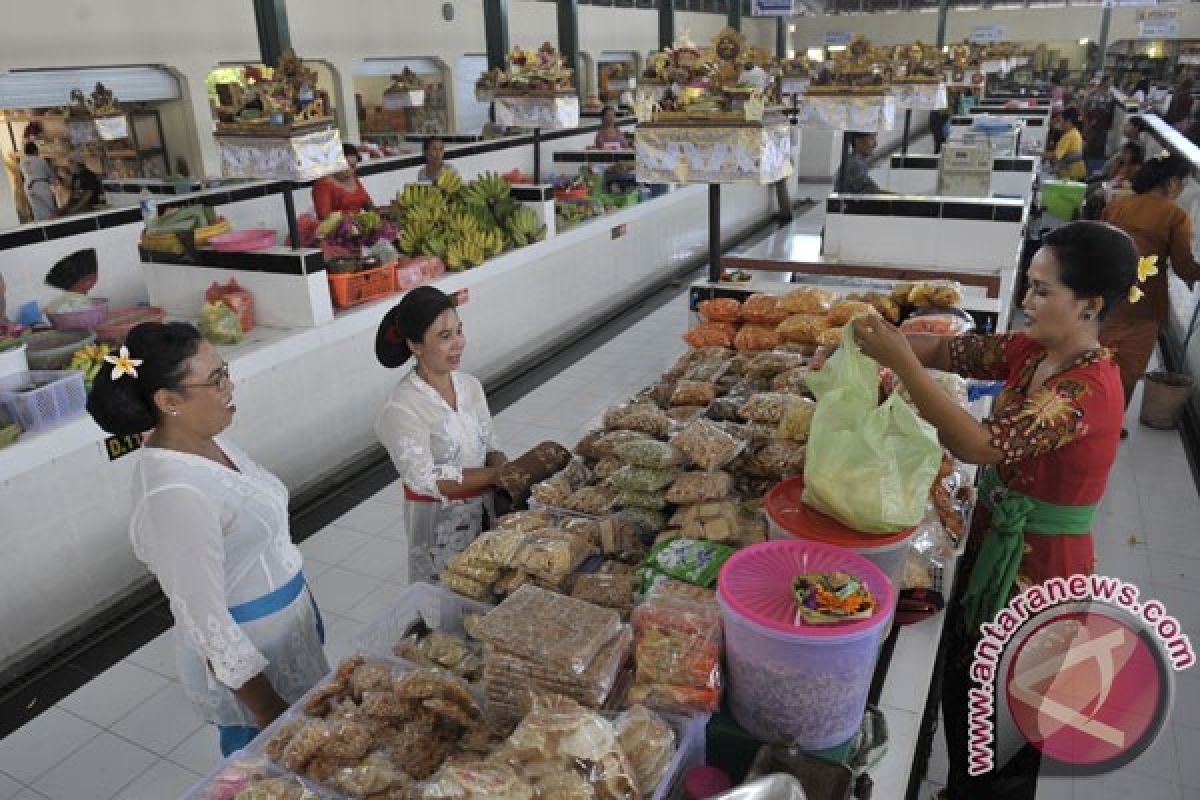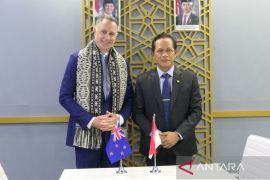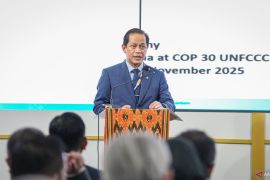Last April, the Indonesian government claimed to have renovated a total of 2,758 traditional markets in the period between 2005 and 2013 at a total cost of Rp4.01 trillion.
Between 2011 and 2013, the Ministry of Trade revitalized 461 traditional markets, 53 of these being pilot projects.
"The funds for the renovation of the traditional markets were taken from the Trade Ministrys Task Assistance Funds and amounted to Rp1.9 trillion," former trade minister Gita Wirjawan remarked while inaugurating the Leuwipanjang Market in Purwakarta District last January.
In 2014, funds worth Rp556 billion were allocated from the state budget to revitalize traditional markets across the country.
In 2015, the government, through the Trade Ministry, will revitalize 469 traditional markets across Indonesia with a funding of about Rp997.5 billion, noted a senior official on Tuesday (Dec. 23, 2014).
"For 2015, we have a total budget (of Rp997.5 billion) to revitalize 469 traditional markets," Director General of Internal Trade of the Trade Ministry Srie Agustina remarked during a 2014 year-end reflection discussion held on Tuesday.
Based on the results of a survey conducted by AC Nielsen in 2013, the number of traditional markets in Indonesia continued to decline. In 2007, traditional markets numbered 13,550, which dropped to 13,450 in 2009, and declined further to 9,950 in 2011.
She pointed out that the traditional markets in Indonesia declined by 8.1 percent while that of modern markets grew by about 31.4 percent.
Agustina revealed that during the past four years, her ministry has revitalized 560 traditional markets across the country.
The number of revitalized markets was relatively small as compared to the total number of traditional markets in the country, which stood at about ten thousand.
Of the 469 markets to be revitalized this year, 37 will be financed with the funds provided by the Trade Ministry while the remaining 335, which are located in various districts and cities, will utilize the capital drawn from special allocation funds.
Agustina stated that as part of the revitalization program, the traditional markets located in the eastern Indonesian regions, border areas, or the outlying islands will be given priority.
She revealed that of the about 9.9 thousand traditional markets, some 3.7 thousand markets have existed for over 25 years.
Agustina explained that her ministry will not merely carry out physical revitalization of the traditional markets but will also strive to improve their functioning wherein the revitalization process will help in the formation of traditional markets, which will function as hubs for all upstream distribution networks.
As per available data for the year 2011, about 30 million people or 12.5 percent of the Indonesian population earned a livelihood as traders at traditional markets.
In a bid to help traditional markets compete with modern retailers, the Trade Ministry has restricted the establishment of modern mini markets over the last year.
According to former trade minister Gita Wiarjawan, the number of mini markets in a district or city should not exceed 150. If a mini market is to be opened in a district that already has 150 such establishments, then it would need to partner with local entrepreneurs.
The traditional market revitalization program is aimed at boosting and accelerating economic growth in the region. This will reinforce the trade sector and increase competitiveness in the domestic market.
As increasingly more number of traditional markets undergo revitalization, more transactions will take place between sellers and buyers and will thus help to automatically stabilize the prices.
Traditional markets also play an important role in the development of the society, and so, they should not be displaced due to the expansion of modern markets, said former Regional Representatives Council (DPD) chairman Irman Gusman.
"While developing modern markets, we should also help to develop traditional markets with modern facilities," Irman remarked as he launched a national campaign to promote shopping in traditional markets earlier this year.
The evidence indicates that the presence of foreign modern markets in Indonesia has sidelined traditional markets. In 2007, there were about 13 thousand traditional markets across the country, which currently has dropped to just nine thousand.
Therefore, the renovation program is also intended to improve the image of traditional markets, which are often perceived as unclean and disorganized. As they are revitalized, traditional markets in the country are expected to become cleaner, neater, and more in keeping with the ambience of modern markets.
General Chairman of the Indonesian Traders Association (Ikappi) Abdullah Mansuri stated that modern markets, with their clean, cool, and convenient facilities, are attractive to the shoppers. On the other hand, the general outlook that traditional markets are unclean and muddy tends to deter shoppers.
"We should change this negative perception regarding traditional markets by developing clean ones with modern facilities," Abdullah emphasized.
(T.A014/INE//KR-BSR/F001)
Reporter: Andi Abdussalam
Editor: Priyambodo RH
Copyright © ANTARA 2014











